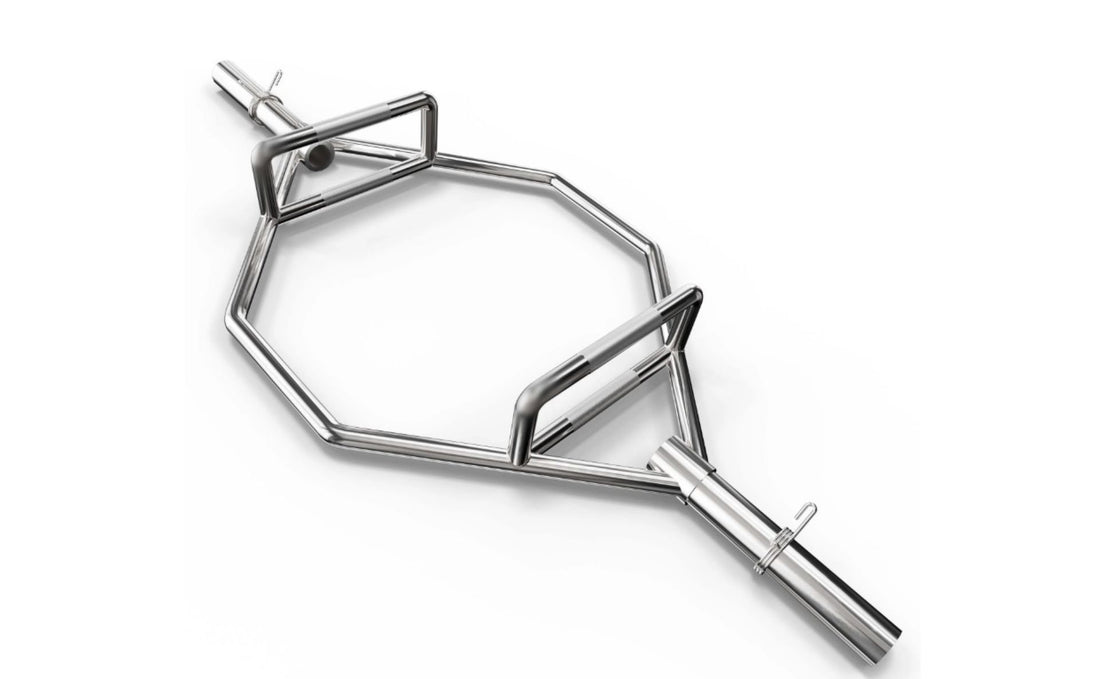
What muscles does trap bar deadlift work? If you're looking to build full-body strength, improve your athletic performance, or even reduce the risk of injury, the trap bar deadlift is a phenomenal tool to have in your workout arsenal. This unique exercise not only bolsters your lower body muscles but also challenges your core and upper body like never before. Intrigued? Read on to discover the diverse muscle groups activated by the trap bar deadlift and how it can upgrade your fitness regime.
The Trap Bar Deadlift Anatomy
The trap bar deadlift is often seen as a safer and more versatile alternative to the traditional barbell deadlift. Its design—a hexagonal bar that allows you to step inside it and grip the handles located at your sides—offers a more ergonomic position. This results in reduced stress on the lower back while maximizing muscle engagement. But what muscles does trap bar deadlift work, exactly? Let’s delve into it.
Primary Muscles Worked
When performing a trap bar deadlift, several key muscle groups take the brunt of the workload:
- Quadriceps: The trap bar deadlift requires a higher hip position and more knee bend compared to the conventional deadlift. This shift in mechanics places a significant load on the quads, making them the primary drivers for lifting the weight off the ground.
- Glutes: As with any deadlift variation, the gluteus maximus is heavily involved. The trap bar deadlift stimulates the glutes powerfully, contributing to hip extension and providing a powerful thrust that helps lift the weight.
- Hamstrings: While the trap bar deadlift recruits the quads more, it still heavily engages the hamstrings. They work in conjunction with the glutes to extend the hip and help control the lowering phase of the lift.
- Erector Spinae: This group of muscles along your spine plays a crucial role in maintaining your posture throughout the lift. The trap bar deadlift recruits the erector spinae to stabilize the back and is less taxing on the lower back compared to the conventional deadlift.
Secondary Muscles Worked
In addition to the primary muscles, other secondary muscles also get a good workout:
- Trapezius: Responsible for maintaining shoulder stability and keeping the upper back tight, the trapezius muscles get activated during the lift.
- Forearms and Grip Strength: Holding onto the handles of the trap bar for the duration of the lift demands grip strength and activates the forearm muscles significantly.
- Core: Your core muscles, including the rectus abdominis, obliques, and transverse abdominis, play a vital role in stabilizing your body and maintaining balance throughout the exercise.
Benefits of the Trap Bar Deadlift
Now that you know what muscles does trap bar deadlift work, it’s essential to understand the benefits this exercise brings to your fitness regime:
- Reduced Risk of Injury: The ergonomic stance lowers the risk of lower back injuries, making it a safer option, especially for those who have back issues.
- Improved Athletic Performance: The trap bar deadlift mimics athletic movements more closely than other deadlift variations, making it beneficial for sports performance.
- Better Muscle Activation: The exercise provides comprehensive muscle engagement, fostering muscle growth and strength.

Proper Technique: Maximizing Gains While Staying Safe
Executing the trap bar deadlift with proper form is crucial for reaping its benefits:
- Setup: Stand inside the trap bar with your feet hip-width apart. Grip the handles firmly.
- Position: Keep your chest up, back straight, and shoulders slightly retracted. Your gaze should be straight ahead or slightly upward.
- Lift: Drive through your heels and extend your hips and knees simultaneously to lift the weight. At the top of the lift, your body should be fully upright with a slight squeeze in the glutes.
- Lowering: Reverse the movement by pushing your hips back and bending your knees. Control the weight as you lower it to the ground.
Common Mistakes to Avoid
Even seasoned lifters can make errors. Here are some common mistakes to watch out for:
- Rounded Back: Keep your back straight throughout the lift to avoid unnecessary strain on your spine.
- Wrong Grip: Ensure your grip is firm but not overly tight to avoid forearm fatigue.
- Excessive Knee Bend: While some knee bend is necessary, avoid a squat-like position to ensure proper quad engagement.
- Fast Movements: Focus on controlled lifts to maximize muscle activation and reduce injuries.
Variations to Spice Up Your Routine
Once you’ve mastered the basic trap bar deadlift, consider these variations to add complexity and further muscle engagement:
- Trap Bar Deadlift Jump: This plyometric variation involves explosively jumping after lifting the bar, targeting power and explosiveness.
- Single-Leg Trap Bar Deadlift: Performing the lift on one leg improves stability and targets the glutes, hamstrings, and core more intensely.
- Paused Trap Bar Deadlift: Pausing at specific points in the lift (such as just above the knees) increases time under tension and muscle growth.
Conclusion
The trap bar deadlift is an unbeatable exercise for anyone looking to enhance their full-body strength, boost athletic performance, and reduce injury risk. Now that you know what muscles does trap bar deadlift work, incorporating this versatile lift into your routine can help you achieve your fitness goals more efficiently. Whether you’re a beginner or a seasoned lifter, the trap bar deadlift offers numerous benefits that make it a valuable addition to any workout plan.





















